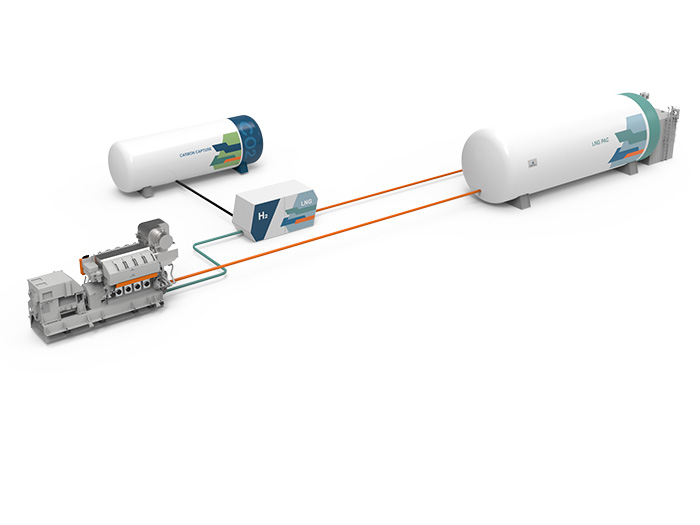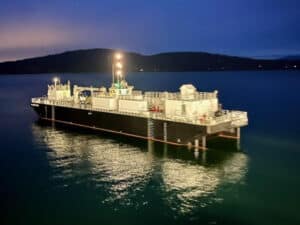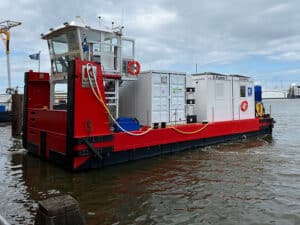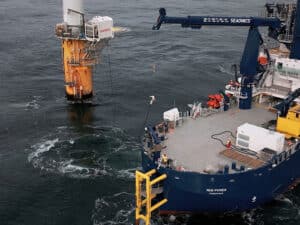
Is the future of LNG as a marine fuel to use it to produce hydrogen?
Written by Nick Blenkey
Gas reformer produces hydrogen from natural gas for use as engine fuel, while the CO2 produced is captured and stored onboard. [Image © Wärtsilä Corporation]
Current barriers to the uptake of hydrogen as a ship’s fuel include the difficulties and costs of its production, distribution and on board storage. However, by producing hydrogen on board using readily available LNG, the solution could become far more viable and in a much faster time than otherwise.
A group that has been working on this approach includes Wärtsilä, class society RINA, ABB, Helbio—a subsidiary of Metacon AB, the Liberian Registry and an energy major. The aim is to have a scalable and sustainable solution that will exceed the current IMO 2050 target for a 70% reduction in carbon intensity without the need for an extensive infrastructure investment. This offers the shipping industry a pathway to low-carbon operations within a reasonable time frame.
The Concept
The concept is based on combining LNG with steam to produce hydrogen and CO2. The hydrogen produced will be used directly in a mix with natural gas in internal combustion engines or in fuel cells, thus eliminating the need for hydrogen to be stored onboard.
The CO2 will be liquefied using the cryogenic stream of LNG that would be used as fuel anyway, and later disposed ashore for carbon storage. Tankers can use the stored CO2 as inert gas during discharge.
“Our gas engines are already able to use mixtures of hydrogen and LNG, and our future efforts will be to reach 100% hydrogen fuel. We are totally committed to supporting in every way possible the decarbonization of shipping operations,” says Lars Anderson, director, product management & sales support, Wärtsilä Marine Power. “This project is one more example of this commitment, and we are very pleased to be partnering with other stakeholders to make the IMO 2050 target achievable.
According to Wärtsilä, the necessary equipment can easily be fitted on the deck of a commercial vessel. Only LNG bunkering will be required and, by progressively increasing the production of hydrogen, the consumption of fossil methane and associated methane slip will be reduced at the same rate.
Wärtsilä and ABB will support the application of hydrogen in powering internal combustion engines and fuel cells respectively, while Helbio will provide the technology and manufacturing of gas reformers. RINA and the Liberian Registry will provide advice and guidance on the application of rules and regulations for novel concept alternative designs, based on Hazid/Hazop analyses, as well as specific rules for this kind of arrangement.




